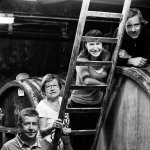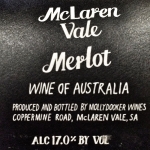The Pebbles Project:
In 1987 Danie Steytler Snr of Kaapzicht Wine Estate took up an opportunity to buy a temporary school building with 12 classrooms. Eight of the classrooms were moved to a new foundation on the Kaapzicht farm with a proper stone structure as small apartments for their workers, and four classrooms were turned into a larger community hall plus a smaller room for a future kindergarten. At the same time the kindergarten which Danie Jnr attended moved into a brand new building and Kaapzicht took the opportunity to inherit all the old furniture, toys and games.
Unfortunately finding a suitable teacher for the little ones proved more complicated, with various mothers from the farm community as well as outside teachers trying their hand with varying success. There were even some periods when the kindergarten wasn’t able to operate.
In 2008, Danie Jnr was approached by Pebbles (a UK charity) who had heard of the attempts to run a farm crèche for the estate workers’ children and he gladly accepted their offer to help! Since then the kindergarten has operated seamlessly under the guidance of Pebbles who educate, advise and monitor the two local ladies who are employed as kindergarten teachers. Currently they look after five babies from 3 months to 3 years, and four children between 4 and 5 years of age. In previous years they have had up to 16 children in the crèche.
On the suggestion of Pebbles, Kaapzicht also started an After School Club (ASC) in 2008, where (currently 31) school-going children can spend the afternoons doing school work under the supervision of two teachers who come from outside the farm. These teachers not only help them to do their work and explain what they might not have understood in school, but also teach them life skills (such as why smoking, drugs and alcohol are bad for kids, healthy eating and sanitary habits, how to prevent pregnancies, entrepreneurial skills etc.), as well as singing, drama, games and sport. This takes place every afternoon between 3 and 6 pm in the community hall.
Last year Pebbles received a sponsorship which supplies all the children in the crèche and ASC with a warm meal and healthy snack, providing the nourishment to enable them to learn better. The community in general supports this project, although there have been some grumbles that the hall is no longer available for parties, due to the many tables, chairs, computers and children’s art work!
Danie Jnr has told us, ‘I remember in the past some children telling me that their little brothers and sisters were tearing up their school books or scribbling in their work, another one told me they do not have a suitable table in their house on which she could do her school work, and during the 71 years that our Steytler family has been farming here only about 10 children managed to finish 12 years of school – all the many others dropped out of school when they were between 14 and 16 years old. Some told me they needed to leave the public school because their parents could not afford the school fees or they wanted to go to work and bring money home. And it is very common for young teenage girls to get pregnant, thus ending their school attendance.
We believe that having the privilege of being land owners comes with the responsibility towards the people who live and work on our land, and that the key to solving all South Africa’s problems (such as poverty, crime, high birth rates, HIV/Aids, overpopulation, lack of water and resources etc.) lies in educating the population.
Hence, in 2002 we started to pay all the public school fees for all the children of all our employees to counter the financial aspect to why our kids were leaving school. But this hardly made a tangible difference and only now, some years since the start of the ASC, do we see a very slow shift in thinking, increasing motivation to complete the twelve school years, an improved learning atmosphere and a few more learners passing the public school end exam.
But this progress is indeed very slow, we will have to have a lot of patience, compassion and endurance. The older farm community is largely uneducated and illiterate and for children to achieve a higher education than their parents might be seen as a threat by the elders, a breaking away from the community; the child who leaves the farm for a tertiary education has to deal with loss of belonging and support and so I personally suspect that it will still take another generation before we will actually see a real shift in the education of our farm community.
In the meantime we have to go on as best as we can… and can afford. The building is made out of wood and hard board and although we have insulated the ceilings, the rooms are extremely hot in summer and cold in winter. I have a special savings account where I collect donations for the school project and I am saving towards two air conditioners, one for the crèche and one for the ASC, which would make studying a lot more pleasant for the children.’
Some further projects:
The Olwethu clinic:
Pebbles also runs the Olwethu clinic on Villiera – Kaapzicht pay R2800 per month so that their workers can go to the clinic to receive first rate medical aid free of charge. The clinic also offers transport, medication, dentistry, birth control etc. The workers also have the opportunity to send family members that don’t work for Kaapzicht at a minimal fee of R60 per visit.
Soccer field:
The estate has built a soccer field on the farm for their workers to be able to play sports on weekends. The Kaapzicht team has won a few trophies over the past years in the Stellenbosch farmers’ league!
The food project:
Kaapzicht have set aside two hectares of land as a vegetable project for their workers. They plant and grow different crops each season which are then shared between the workers for free. They have just planted mielies (sweetcorn) and watermelons which will be ready for Christmas – everyone’s favourite. Other crops grown are potatoes, gem squash, butternut squash, pumpkins, carrots and spinach.
Mini Bus/taxi:
The estate has bought a minibus as a form of transport for their workers to get to town. Most of them either cycle or walk to town 5 km away but now they can be driven for free every Saturday and after work each day. It also transports the soccer team if they are playing an away game.
Farm shop:
Danie Snr started a farm shop 20 years ago so that Kaapzicht workers could receive food on the farm without having to go to town each day. It sells the basics (bread, milk, meat, eggs etc.) at cost price and food can be bought on a book system so that it is always available to them.



